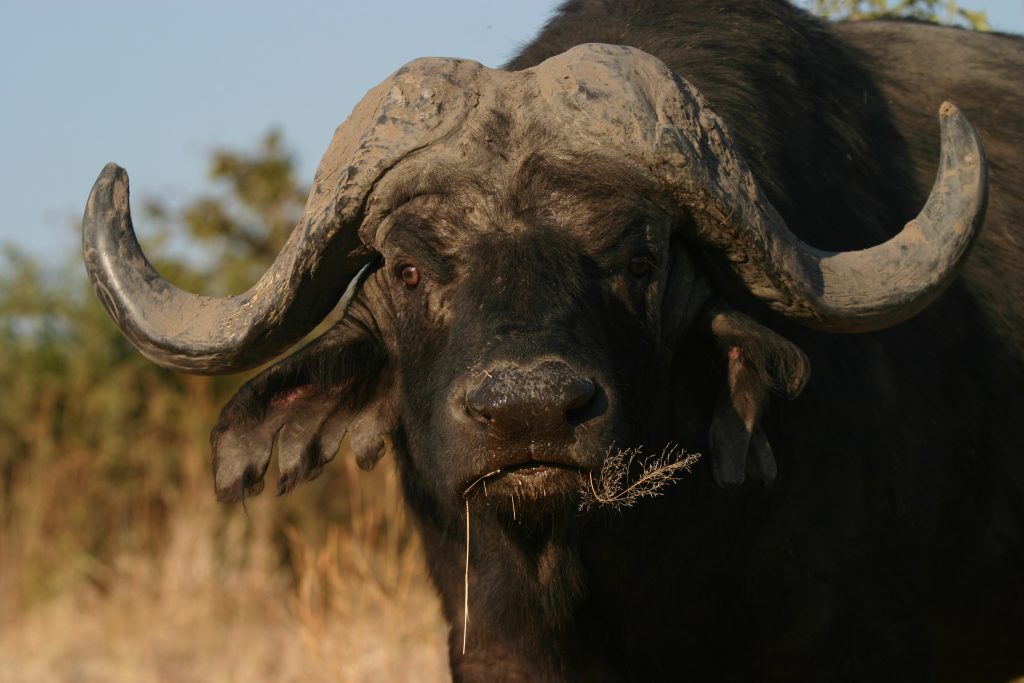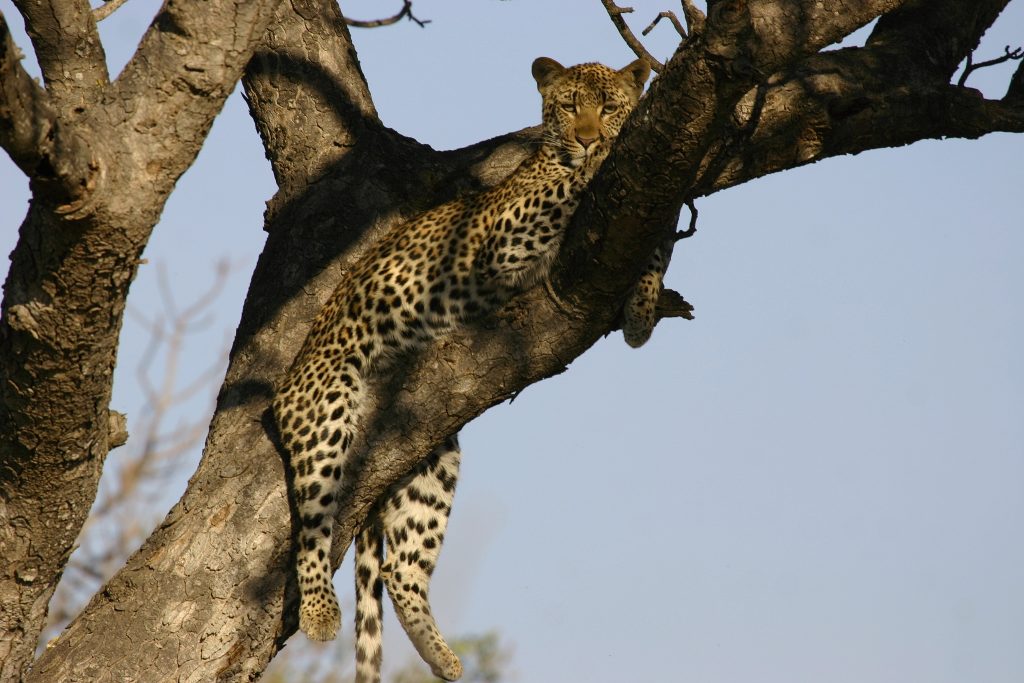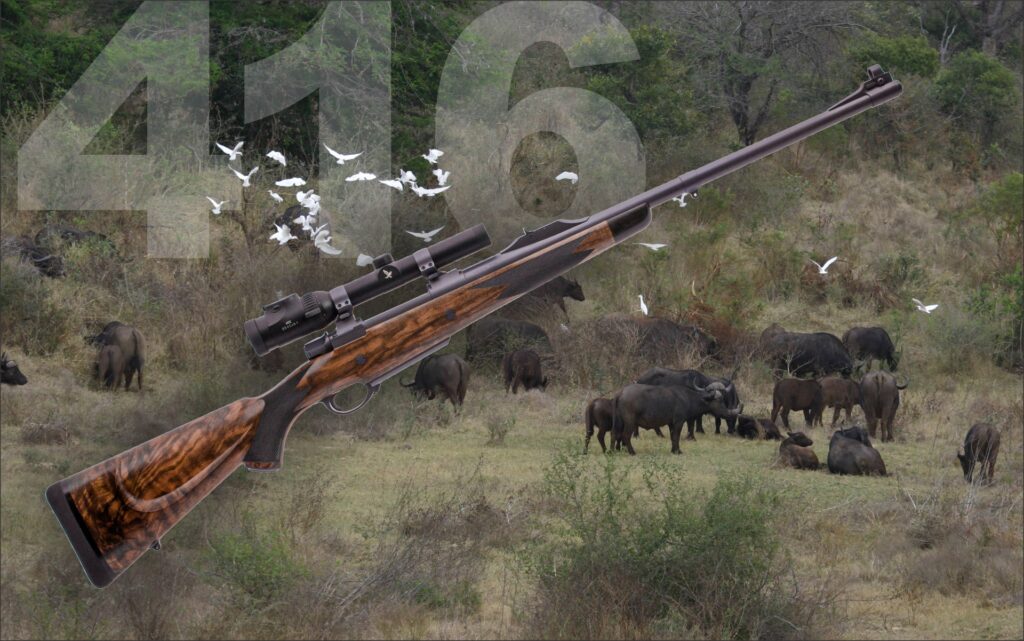I have a 416 Rigby built on a CZ 550 Safari rifle. I converted the bolt to a Winchester Model 70 style safety/bolt sleeve and spot-polished the bolt and extractor. The magazine received a new floor plate assembly to hold another cartridge. The gun now will hold four in the magazine and one in the chamber.
The factory sights were milled to create a wide V notch on the solid rear leaf and the 200 and 300 sight notches were left with the narrow factory notch. The action was restocked in California walnut, with a black ebony forearm cap and pistol grip cap, then checkered in a full Fleur de Leis pattern. The gun has an additional forearm screw because of the heavy recoil. I left this on the conversion and had an ebony diamond inlet around the screw hole. The stock was fitted with a red English recoil pad, which brought the whole package into a new world of Africa and the sound of big game in the early morning bush.
I have to admit that the gun has a well-fitting stock and looks pretty. The .416 Rigby in this action can be loaded up to equal the .416 Weatherby. The only drawback is this cartridge can kick like an 18-wheel truck smashing into your shoulder. Shooters at the range laugh that the heavy loads will spin me on the shooting bench. I have fired less than 100 full loads in this gun.
I have shot it a lot. I like to work with cast bullets and have a lead bullet that weighs 418.5 grains on average when cast with WW and 2% tin and dropped into water from the mold. I size and lube with NRA Alox formula and a Hornady gas check. It is a round-nose design with a gas check. My load is 35 grains of 5744 with standard Winchester primers. This load will shoot a five-shot group just over one inch at 100 yards. The shooters in my club are amazed as to how well-cast lead in a caliber of this size will consistently shoot. The recoil is pleasant and you can shoot this load all day long.
I have used this gun and load in Africa on Plains game. I shot a cow buffalo right between the eyes at 50 yards on a line straight down the neck. It dropped in its tracks. The bullet traveled over 36 inches in the body of the animal and when recovered showed some riveting at the nose. There did not appear to be any weight loss on the projectile.
On the same trip, I also used the same load to shoot a male Nyala that was running away from me in heavy brush at about 40 yards. The bullet hit the tail just below the spine and traveled through the animal. It went right down and never moved. The skinner commented that there was very little or no meat lost.
It is a great caliber and with a wide range of loadings, you can use it to hunt anything in the world.
A couple of years ago a doctor friend of mine called me to say he had a chance to pick up two Ruger African game rifles at a very reasonable price. They were very good-looking rifles with some of Ruger’s better wood. He had a friend who also was in on the deal and they were each to take one of the rifles. One of the rifles was in .416 Rigby and the other was a 458 Lott. He wanted to know more about the gun and especially about the calibers. He also wanted my advice as to which caliber he should select.

My comments were that the .458 Lott was a great caliber and would be all that he would ever need for an African Big Game rifle. Components were easy to come by at very reasonable prices, and he could load the cartridge to any level of performance that he desired. Also, he could fire 458 Winchester cartridges in the gun in the event of a dire emergency. Bullets were available to load from a level of the .45 Colt, up into the .45-70 class, and then into the heavy magnum level. In short, a lot is going for this cartridge, especially if you reload.
Next was to do an overview of the .416 Rigby cartridge. I told him that components for the .416 were a lot more expensive and cases were harder to find. Bullet selection was mostly limited to heavy weights and heavy construction. The cost of factory ammunition was in a category, where if the recoil did not limit your shooting of the gun, the expense would do it. The factory loads would limit the type of hunting you would do with the piece and there was a chance that it would become a safe princess, to look at but never hold very much.

When asked as to which gun I would go for, I did not drop a heartbeat and told him that there wasn’t in my mind any question as to what caliber to choose. The .416 had all the pizazz you would ever find in any cartridge and every time you looked at the rifle or even the cartridge you would find yourself blissfully sweating under the blazing sun of an Africa long past, but still carried in your heart. Even if you never get to go there, go for the .416 and you will never look back and regret the choice.
I hope this gives you some load advice and my thoughts on the cartridges

